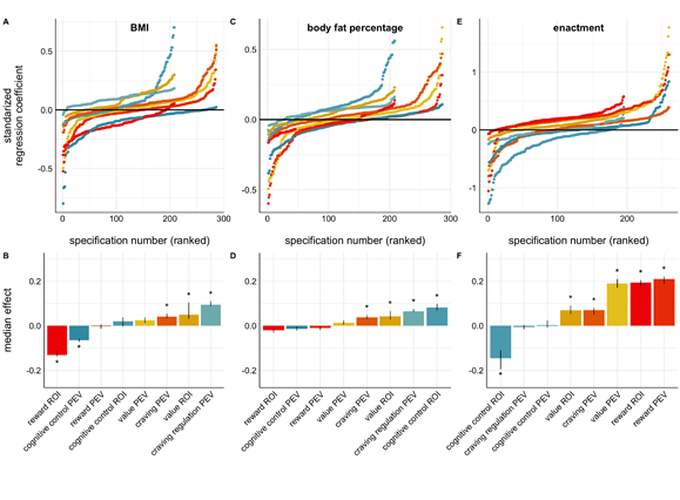Neural indicators of food cue reactivity, regulation, and valuation and their associations with body composition and daily eating behavior
Abstract
Exposure to food cues activates the brain’s reward system and undermines efforts to regulate impulses to eat. During explicit regulation, lateral prefrontal cortex activates and modulates activity in reward regions and decreases food cravings. However, it is unclear whether: (1) there are between-person differences in recruitment of regions associated with reward processing, subjective valuation, and regulation during food cue exposure—absent instructions to regulate; and (2) individual differences in activation patterns predict body composition and daily eating behaviors. In this preregistered study, we pooled data from several fMRI samples to examine whether regions associated with reward, valuation, and regulation, respectively, as well as whole-brain pattern expression indexing these processes, were recruited during food cue exposure and associated with body composition and real-world eating behavior. Cross-validated regression models indicated that univariate and multivariate measures of reward and valuation were associated with individual differences in BMI and enactment of daily food cravings. Specification curve analyses further revealed reliable associations between univariate and multivariate neural indicators of reactivity, regulation, and valuation, and all outcome measures. These findings highlight the utility of these methods to elucidate brain-behavior associations and suggest that multiple processes are implicated in proximal and distal markers of self-regulatory success and failure.
